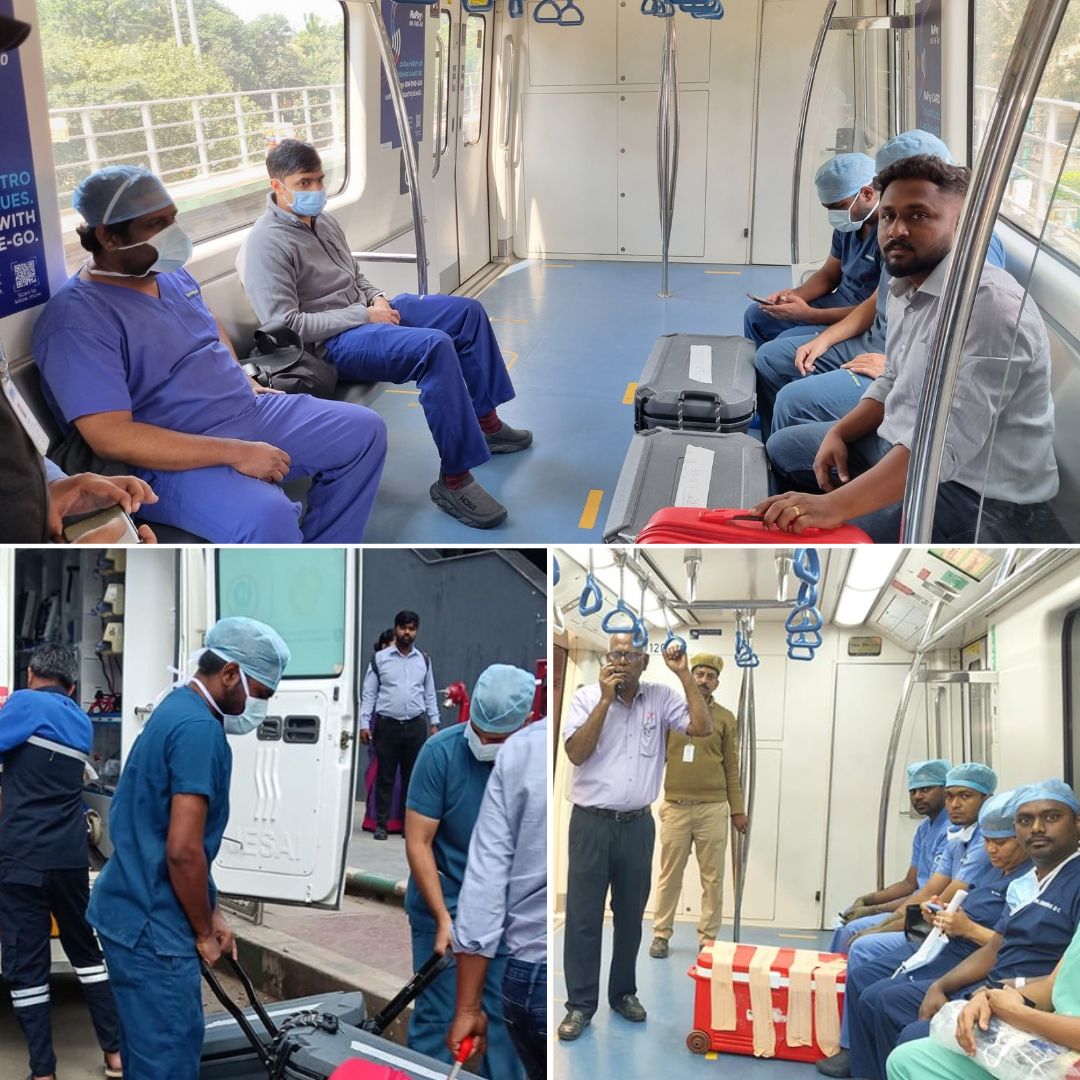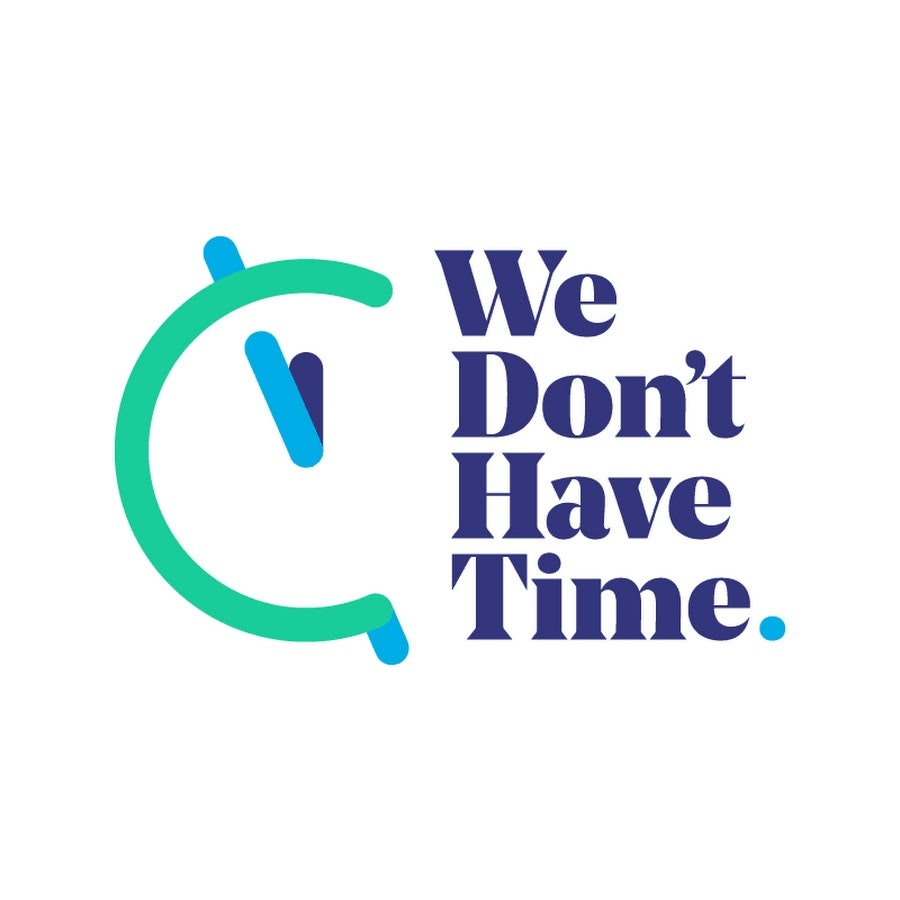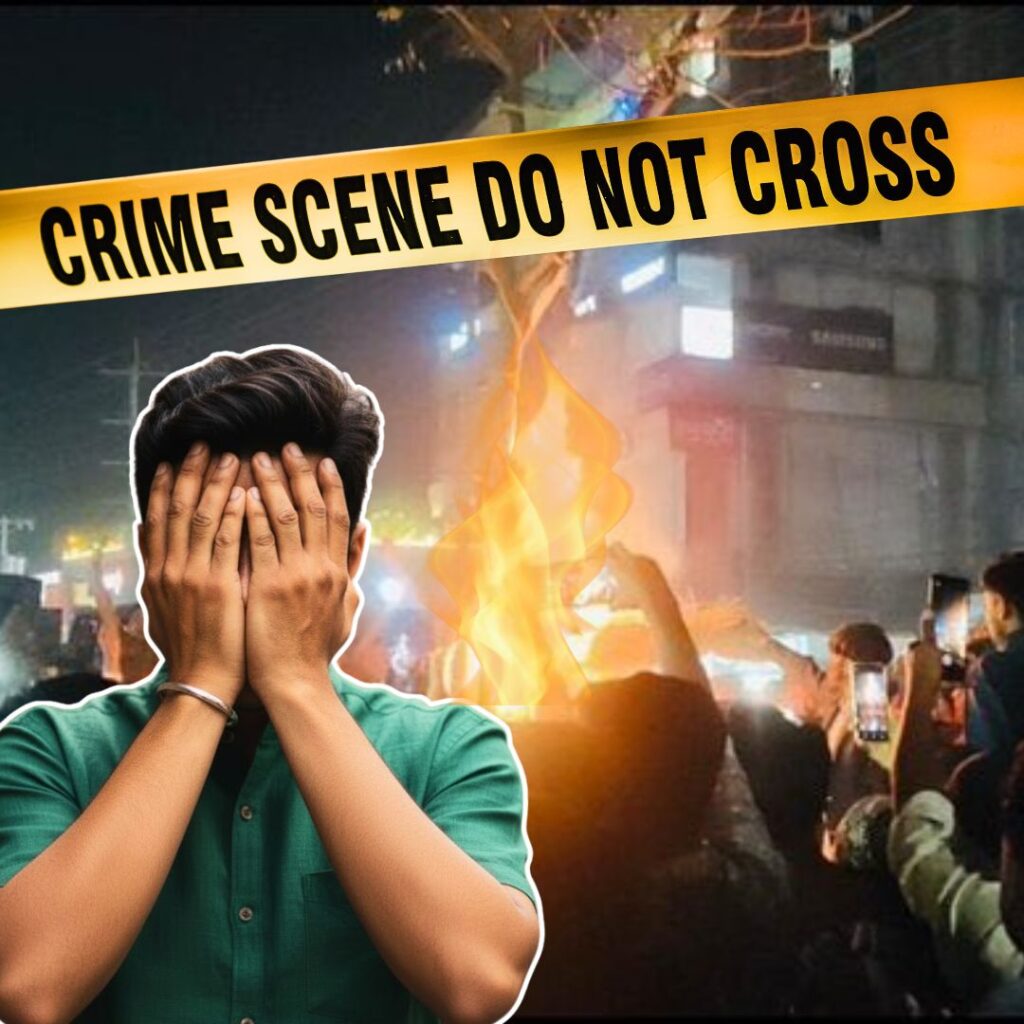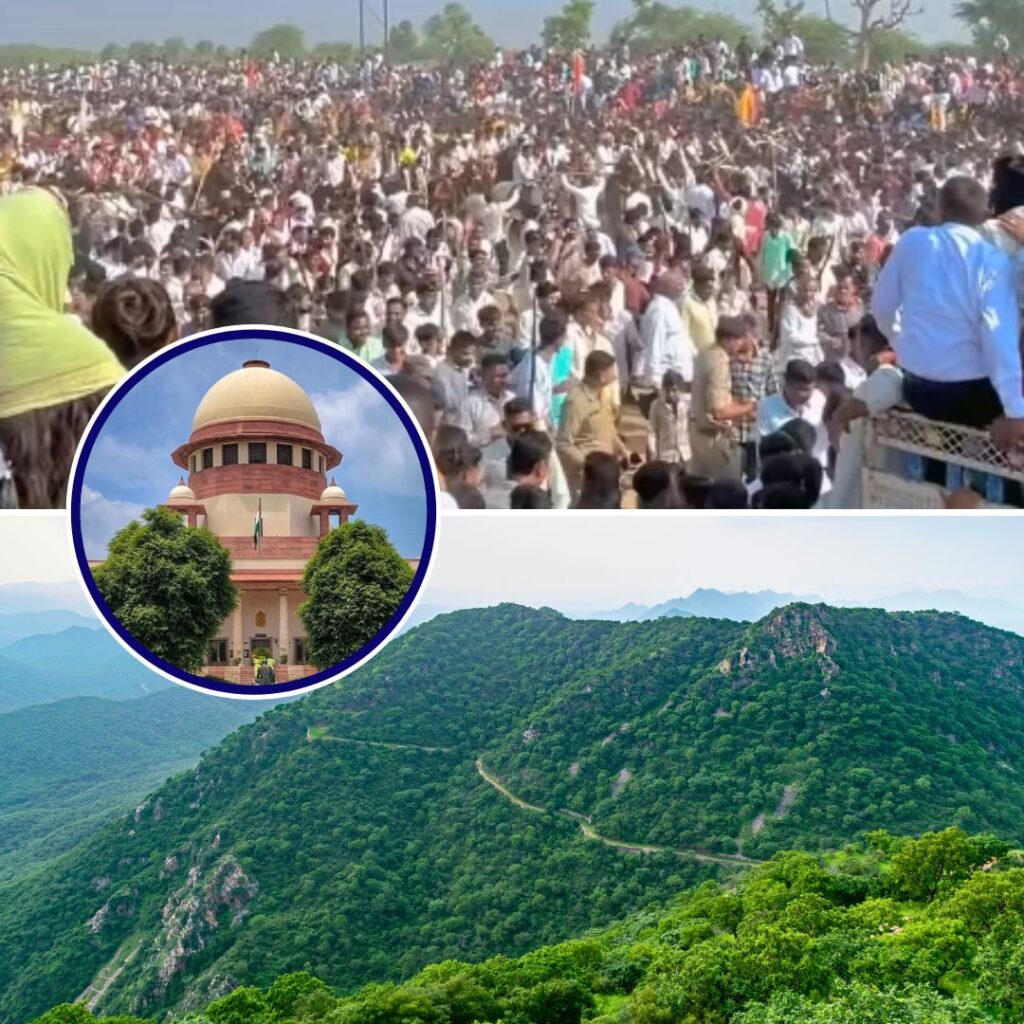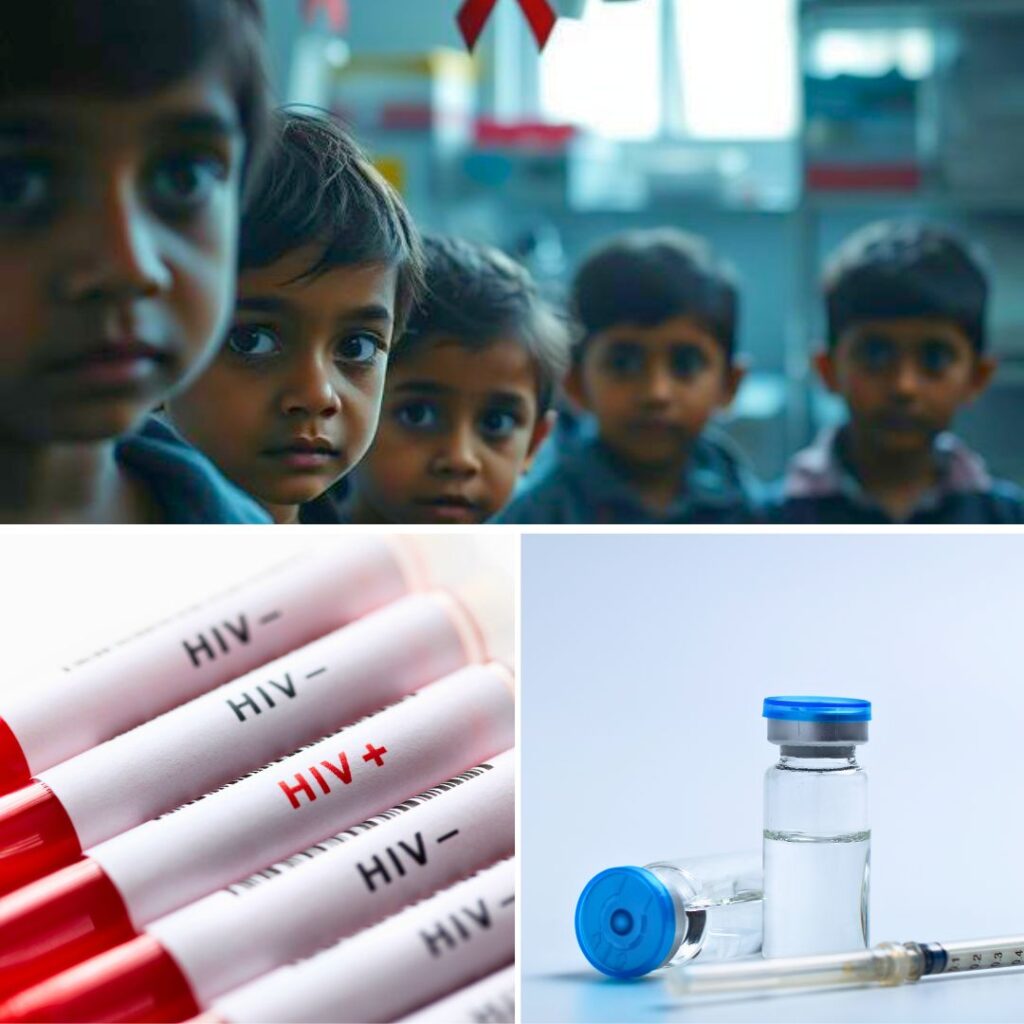In a pioneering move, Bengaluru’s Namma Metro was used to transport donor lungs and a human heart urgently needed for transplantation, bypassing severe traffic congestion. It swiftly transported human lungs across 33 kilometres from Yeshwanthpur to Bommasandra and then RV Road Station in just 68 minutes.
Faced with persistent traffic congestion and the limitations of traditional ambulance routes, doctors from Narayana Health City turned to the metro system to ensure the timely delivery of donor lungs for a 64-year-old patient who had been waiting for a transplant for over six months. Using the metro’s yellow line the heart was also transported within 60 minutes.
This novel transport method included traversing both the Green and Yellow Lines with seamless coordination from Bengaluru Metro Rail Corporation Limited (BMRCL), underscoring the potential of urban transit to play a crucial role in emergency healthcare logistics.
A Life-Saving Journey on Rails
The lungs were picked up from Sparsh Hospital in Yeshwanthpur and the medical team boarded the Green Line at Goraguntepalya Metro Station circa 10:05 am.
After covering 13 kilometres and 18 stations on the Green Line, the transplant party switched lines at R.V. Road, continuing along the newly inaugurated Yellow Line for another 20 kilometres with 13 more stops, finally reaching Bommasandra Metro Station at 11:13 am.
The entire journey spanned 31 stations in just over an hour during weekday rush hour, a feat unattainable by road transport in Bengaluru’s notorious traffic.
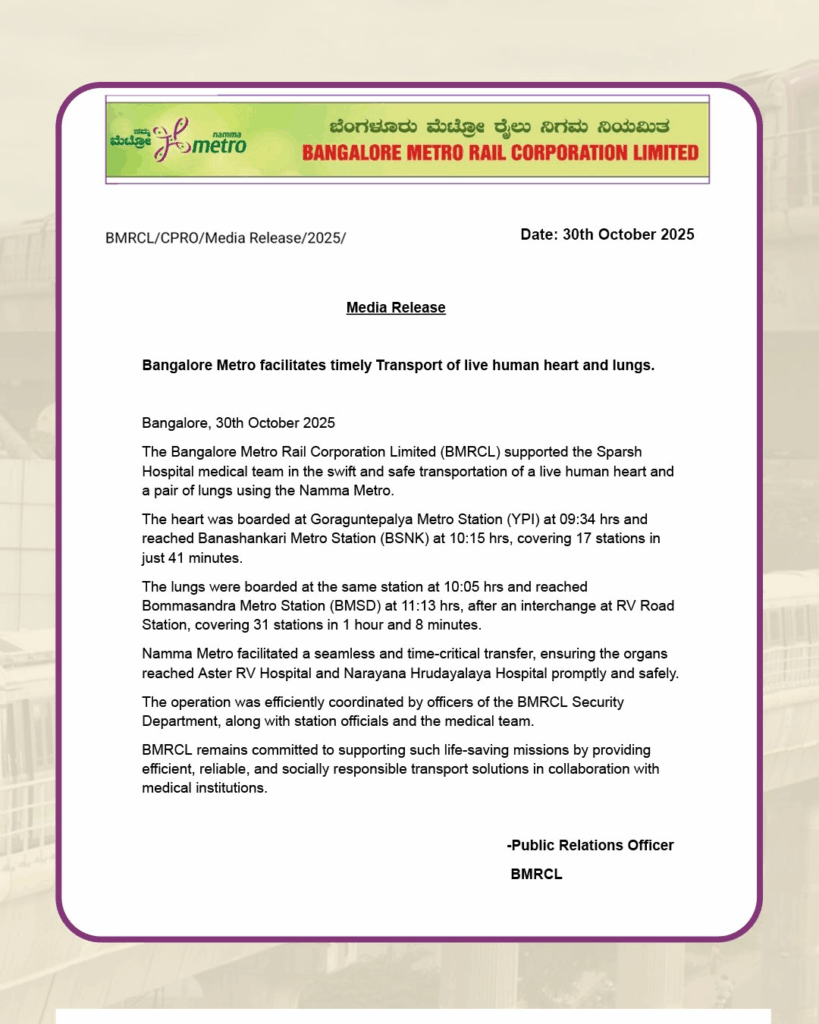
Urban Transit Innovates Emergency Care
The use of Namma Metro for organ transportation marks a pioneering shift from conventional transport modes. Traditionally, ambulances carrying organs relied on green corridors, specialised clear roads patrolled by traffic police to ensure rapid transit but at the expense of disrupting regular traffic flow.
Bengaluru’s metro circumvents road congestion altogether, offering a dedicated, congestion-free route enabling precise timing. This method also benefits from the metro’s existing infrastructure and security protocols, with BMRCL providing exclusive coach space for secure carriage of the organs.
Real-time collaboration between metro security teams, station staff, and hospital personnel ensured a smooth, uninterrupted transfer, setting a benchmark for future emergency logistics in dense urban settings.
Growing Momentum and Wider Impact
This latest success builds on prior instances earlier in 2025 when Bengaluru used metro transit for vital organ transportation: a liver was moved via the Purple Line in August and a heart through the Green Line in September. Additionally, on the same day as the lung transport, a heart was swiftly ferried from Goraguntepalya to Banashankari via the Green Line in just 41 minutes, emphasising the metro’s role as a dependable backbone for life-critical transport across the city.
As traffic snarls continue to challenge emergency medical services nationwide, Bengaluru’s initiative provides a replicable blueprint for other Indian cities. The scalability and efficiency of metro transit demonstrate how urban infrastructure can evolve beyond everyday utility into instruments of social good and healthcare innovation.
With help from Namma Metro’s Yellow Line, donor lungs reached Narayana Health City within 60 minutes, ensuring a successful transplant.
— Narayana Health (@NarayanaHealth) October 30, 2025
Thank you @OfficialBMRCL & the donor family for making it possible.#OrganDonation #NammaMetro #NarayanaHealthCity pic.twitter.com/Mz2WB1TvZZ
The Logical Indian’s Perspective
The courageous collaboration between Narayana Health, Sparsh Hospital, and Bengaluru Metro highlights the profound impact of empathy combined with technological and logistical ingenuity.
This initiative exemplifies how public services can be reimagined to save lives, reinforcing our urban systems’ potential to foster harmony and well-being.
The Logical Indian applauds this exemplary use of shared civic resources and urges policymakers and transit authorities across the country to formalise networks integrating metro systems with emergency medical response frameworks.
#BMRCL helped in the swift transport of a pair of lungs from Sparsh Hospital, Goruguntepalya to Narayana Hrudayalaya, Bommasandra in just 1 hour 5 minutes, covering 31 stations across the Green and Yellow Lines. pic.twitter.com/1CbRc5nEg6
— ನಮ್ಮ ಮೆಟ್ರೋ (@OfficialBMRCL) October 30, 2025


